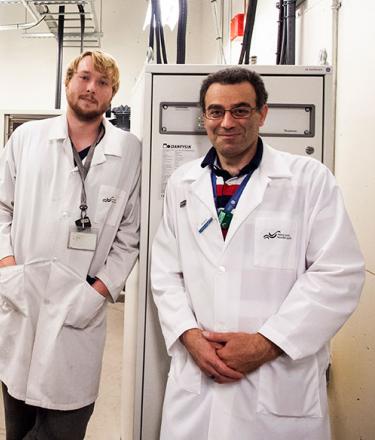
-

Resources for professional advisors
Building legacies together.
As a trusted advisor you are in a unique position to explore how your clients can support charitable causes important to them through their financial or estate plan.
Resources for your practice:
Glenn Stewardson, CFP explains why charitable giving conversations are important, how these conversations can deepen the relationship with clients, and how they will benefit an advisor’s business in the long-term.
The Canada Revenue Agency (CRA) defines a charitable gift as a voluntary transfer of property without valuable consideration to the donor.
Split ReceiptingA charitable gift may be claimed for tax purposes even if the donor receives a material benefit from the gift. This benefit is referred to as an advantage and must be shown on the tax receipt. The value of any advantage is deducted from the value of the tax receipt. The advantage must not exceed 80 percent of the fair market value of the property transferred. This opens up planning opportunities for gifts such as a bargain sale of real estate. |
Need an illustration?A donor donates a house with a fair market value of $500,000 to a charity. There is an outstanding mortgage on the property of $200,000 and the charity agrees to assume the debt. In this case the outstanding mortgage is considered to be an advantage to the gift. As the advantage is less than 80% of the fair market value of the donated property, a charitable tax receipt may be issued for the difference of $300,000. |
Canadians enjoy a generous charitable tax credit for contributions to the charitable causes important to them.
Section 118.1 of the Income Tax Act provides a tax credit to individuals for donations made to registered charities. A business receives a tax deduction.
How does Canada's generous tax credit add up?
The tax credit is in two parts; a federal and a provincial income tax credit. A federal tax credit rate of 33% matching the top tax rate applies to donations that are above the first $200, when an individual's taxable income exceeds $205,842.
The federal credit is calculated as the total of the following:
- 15% on the first $200 of total donations in the year
- 33% on whichever of the following amounts is less:
- the amount of the donations for the year above the first $200
- the amount of the taxable income that is over $205,842
- 29% on the total donations for the year above the first $200, which are not eligible for the 33% rate above
Glenn Stewardson, CFP discusses how advisors can incorporate philanthropic conversations with clients.
Glenn Stewardson, CFP discusses the benefits of asset donations opposed to cash-flow contributions, adding value to your practice through philanthropy.
{"preview_thumbnail":"/sites/default/files/styles/video_embed_wysiwyg_preview/public/video_thumbnails/xsmU-a6hLkk.jpg?itok=8d8M6qsd","video_url":"https://youtu.be/xsmU-a6hLkk","settings":{"responsive":1,"width":"854","height":"480","autoplay":0},"settings_summary":["Embedded Video (Responsive)."]}
- Clients give a lot more often than you think
Advisors think that 48 per cent of their client base donates regularly when, in fact, the actual number is 93 per cent. You need to talk to them about charitable strategies, ask them their charitable goals and plan around it. - Clients give away much more than you’d guess
Fifty-one per cent of clients who have more than $1 million in assets gave between $5,000 and $100,000 last year. And most advisors don’t know about it because they fail to ask their clients about their charitable endeavours. - Clients want advanced charitable strategies
Seventy-two per cent of clients with more than $1 million in investable assets say that they found it very valuable for their advisor to offer them charitable strategies. Many advisors know about basic strategies but being able to offer advanced strategies can change the way the client views your relationship. - Knowledge is power
More than half (57 per cent) of clients surveyed said, if their advisor was knowledgeable about charitable strategies, they would view their wealth manager as a broad financial expert. - Retaining ‘assets under management’ for generations
Thirty-seven per cent of clients said that charitable discussions led to assets staying with the parent’s advisor because they were now viewed as the family’s advisor. Advisors who can demonstrate expertise in charitable giving strategies can differentiate themselves from competitors to keep future generations and their assets, in-house. - Charitable giving acumen equals new referrals
Thirty-five per cent of clients said that talking about charitable strategies makes the advisor more referable. Now we just need to get advisors to ask for referrals more often. - They want to give away more than just their cash
The fidelity report found that 91 per cent of clients give cash because they’re not sure what else they can give. Donating appreciated assets, real estate and collectables does take a higher level of expertise but with the right network and training can be an excellent tax-efficient offering. - Know your way around the tax code
Fifty-nine per cent of clients say their advisor has not told them that complex assets can be donated in a tax-favoured manner that can give them the chance to donate more than they ever expected. - Keep an open mind and be progressive about charitable strategies
Advisors seem perplexed as to where to get training on strategies like the ones that are most valuable to their philanthropic clients. Advisors need to open their minds to different strategies and techniques that might have seemed foreign or “against their investment philosophy” to serve their client’s needs. It is not about you, it is about what is best for your clients. - When philanthropy is done right, everybody wins
If you learn these strategies you will become more referable, keep the assets after your clients die, and have a more fulfilling career knowing you have helped empower your clients to take control of their money by directing it to the charities that mean the most to them.
List compiled by: www.financial-planning.ca
Have questions? Contact us.
Should you have any questions or require additional information about incorporating charitable giving into your practice, our charitable giving advisors are available to assist you.

| Geoff C. Graham, CFRESenior Director, Charitable Giving Officer and Estate Administration |
Interested in learning more about the types of gifts your clients can give to the QEII Foundation?
Follow the links below to learn more about the various types of gifts that you can educate your clients on when considering charitable giving as part of their financial planning.




